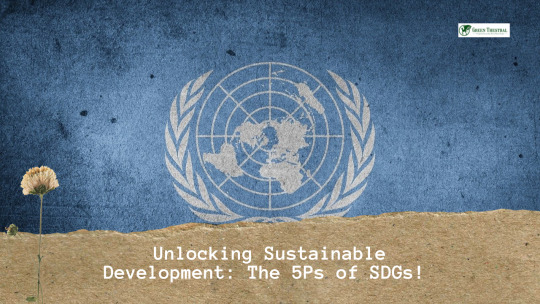#creating a success roadmap
Explore tagged Tumblr posts
Text
How to Push Through Challenges and Achieve Your Goals
Life is full of challenges, and the journey to achieving your goals is never a straight path. Whether you’re pursuing financial independence, building a business, or developing new skills, obstacles will arise. The key to success lies in how you navigate these challenges and stay committed to your vision. Here’s a step-by-step guide to pushing through difficulties and achieving your dreams. 1.…
#accountability partners#achieving dreams#achieving financial independence#achieving goals#achieving milestones#achieving success#boosting productivity#breaking bad habits#building good habits#business growth#career growth#commitment to success#consistency in success#continuous self-improvement#creating a success roadmap#daily motivation#daily success habits#determination and persistence#developing resilience#discipline in success#dream big achieve big#effective goal setting#efficiency tips#entrepreneurial mindset#focus and determination#goal execution#goal planning#goal setting#goal tracking#goal-oriented mindset
0 notes
Text
From Waste to Wealth: Transforming Trash into Sustainable Success

In a world grappling with environmental concerns and limited resources, the concept of "waste to wealth" holds tremendous promise. Waste, once perceived as a burden, is now recognized as a potential asset that can be transformed into a valuable resource. From recycling and upcycling to innovative technologies, this article explores the various ways in which we can turn waste into wealth, promoting sustainable practices and economic growth.
The Power of Recycling
Recycling has become a household term, but its significance cannot be overstated. By collecting and processing waste materials such as plastic, paper, glass, and metal, we can divert them from landfills and give them a new life. The recycling industry not only reduces the strain on our planet's resources but also creates employment opportunities and contributes to the circular economy. Governments and businesses worldwide are investing in recycling infrastructure and raising awareness to maximize the potential of waste recycling.
Upcycling: Adding Value to Discarded Materials
While recycling focuses on breaking down waste materials, upcycling takes a different approach by transforming them into products of higher value. Instead of downgrading the material, upcycling adds creativity and innovation to turn waste into desirable and unique items. From repurposing old furniture to creating fashion accessories from discarded textiles, upcycling has gained popularity as a sustainable alternative to conventional manufacturing. This practice not only reduces waste but also fosters creativity and entrepreneurial opportunities.
Innovative Technologies for Waste Management
Advancements in technology have revolutionized waste management, offering exciting possibilities for a greener and more sustainable future. One groundbreaking technology that has gained significant attention is waste-to-energy conversion. This process involves transforming organic waste into valuable biogas or biofuels through various techniques such as anaerobic digestion and pyrolysis.
Anaerobic digestion is a biological process that breaks down organic waste in the absence of oxygen, producing biogas as a byproduct. The organic waste, such as food scraps, agricultural residues, and sewage sludge, is placed in an enclosed tank where anaerobic bacteria decompose the waste and generate methane-rich biogas. This biogas can then be used as a renewable energy source for electricity generation, heating, or even as a vehicle fuel. The remaining digestate, which is a nutrient-rich residue, can be utilized as a natural fertilizer for agriculture, closing the loop on waste management.
Pyrolysis is another waste-to-energy conversion process that involves heating organic waste in the absence of oxygen, resulting in the production of biochar, bio-oil, and syngas. Biochar is a stable carbon-rich material that can enhance soil fertility and carbon sequestration, while bio-oil and syngas can be utilized as energy sources. This process can be applied to various types of organic waste, including agricultural residues, forestry waste, and even certain types of plastics.
The waste-to-energy conversion technologies not only offer a sustainable solution for waste management but also contribute to the production of renewable energy. By diverting organic waste from landfills, these processes help reduce greenhouse gas emissions, as landfilling organic waste leads to the release of methane, a potent greenhouse gas. Furthermore, the utilization of biogas and biofuels as energy sources helps decrease reliance on fossil fuels, mitigating the negative impacts of climate change and supporting the transition to a low-carbon economy.
While waste-to-energy conversion primarily focuses on organic waste, technology is also advancing to address the challenges posed by non-recyclable plastics. Traditional recycling methods often face limitations when it comes to certain plastics, such as multilayered packaging and mixed plastics that are difficult to separate and process. To tackle this issue, innovative technologies like plasma gasification and chemical recycling are being explored.
Plasma gasification is a high-temperature process that converts solid waste, including non-recyclable plastics, into a synthetic gas known as syngas. This syngas can be further utilized as a source of energy or as a chemical feedstock for the production of various materials. The process employs extremely high temperatures generated by an electric arc or plasma torch, breaking down the waste into its elemental components.
Chemical recycling, also known as advanced recycling or feedstock recycling, involves breaking down plastics into their molecular building blocks through various chemical processes. These building blocks can then be used as raw materials to produce new plastics, reducing the demand for virgin fossil fuel-based plastics. Chemical recycling has the potential to address the challenges posed by mixed plastics, post-consumer plastics, and plastics that are difficult to recycle through traditional mechanical processes.
By exploring and implementing these innovative waste management technologies, we can significantly reduce waste generation, minimize environmental pollution, and create valuable resources. Waste-to-energy conversion technologies provide a sustainable alternative to conventional waste disposal methods, generating renewable energy and reducing greenhouse gas emissions. Additionally, plasma gasification and chemical recycling offer solutions to the challenges posed by non-recyclable plastics, fostering a more circular economy and reducing reliance on fossil fuels.
As technology continues to advance and awareness of environmental issues grows, it is crucial to support and invest in these innovative waste management solutions. Collaboration between governments, businesses, and individuals is vital to drive the adoption of these technologies, promote sustainable practices, and pave the way for a greener and more sustainable future. By harnessing the power of technology, we can transform waste into wealth, mitigate environmental impacts, and build a more resilient planet for generations to come.
The Circular Economy Approach
The circular economy is an economic system that aims to minimize waste generation and maximize resource utilization. It emphasizes the concept of "closing the loop" by designing products that are durable, repairable, and recyclable. Through practices like product life extension, sharing economy models, and responsible consumption, the circular economy reduces the extraction of raw materials and promotes the efficient use of existing resources. By adopting a circular approach, businesses can not only reduce waste and costs but also enhance their brand reputation and contribute to environmental preservation.
Waste Management as a Business Opportunity
The transition from waste to wealth has opened up new avenues for entrepreneurs and innovators. Startups are emerging in various sectors, focusing on waste management and resource recovery. From companies that convert food waste into fertilizer to those that produce eco-friendly packaging materials, these businesses demonstrate the potential for profit while addressing environmental challenges. Governments and investors are supporting these ventures, recognizing their ability to create jobs, drive economic growth, and contribute to a sustainable future.
Community Engagement and Education
Creating a sustainable future requires collective action, and community engagement plays a crucial role. Education and awareness campaigns can help change people's attitudes and behaviors towards waste management. By promoting responsible consumption, waste segregation, and recycling practices, individuals can actively participate in the waste-to-wealth movement. Community initiatives, such as local recycling centers, composting programs, and upcycling workshops, provide platforms for collaboration and knowledge-sharing. Together, we can build a more sustainable and prosperous society.
Conclusion
The waste-to-wealth concept holds immense potential for addressing environmental challenges and creating economic opportunities. By embracing recycling, upcycling, and innovative technologies, we can transform waste into valuable resources, reduce landfill burden, and mitigate the depletion of natural resources. The circular economy approach and the rise of waste management startups further demonstrate the viability of turning waste into a profitable enterprise. However, achieving lasting change requires collective efforts, community engagement, and continuous education. Let us seize the opportunity to turn waste into wealth and build a sustainable future for generations to come.
#Waste to wealth: Transforming trash into valuable resources#Innovative waste management technologies for a sustainable future#Turning waste into renewable energy: Waste-to-energy conversion#From waste to biogas: The power of anaerobic digestion#Waste-to-energy: A greener solution for waste management#Sustainable success: Converting waste into wealth#Waste management revolution: Unlocking the potential of technology#Waste-to-energy technologies: A pathway to a circular economy#Pyrolysis: Transforming organic waste into biofuels#Plasma gasification: Tackling non-recyclable plastics for a greener future#Chemical recycling: Reshaping the plastic waste landscape#Waste-to-energy: A sustainable approach to waste management#Waste transformation: From burden to economic opportunity#Recycling and upcycling: Building wealth from waste#Waste management innovations: Redefining sustainable practices#Waste-to-wealth revolution: Creating value from discarded materials#Turning waste into resources: A roadmap to sustainability#Waste conversion technologies: Bridging the gap between waste and wealth#Waste-to-energy solutions: Powering a greener tomorrow#Sustainable waste management: Embracing the waste-to-wealth concept#Upcycling for a prosperous future: Redefining waste utilization#Waste-to-energy advancements: Paving the way for a circular economy#Waste-to-wealth strategies: Maximizing resource efficiency#Transforming waste into valuable commodities: The future of waste management#Waste conversion technologies: Innovations for a sustainable world#Waste-to-wealth practices: Shaping a more prosperous society#Waste management reimagined: Harnessing technology for a greener planet#Turning waste into renewable resources: The power of waste-to-energy#Circular economy and waste transformation: A pathway to sustainable growth#Waste-to-wealth initiatives: Driving economic and environmental benefits
2 notes
·
View notes
Text
The Roadmap to Expansion: Essential Tools for Scaling Your Business
In today’s fast-paced market, entrepreneurs find themselves at a crossroads when it comes to growth. The roadmap to expansion is filled with opportunities and challenges alike. To successfully scale your business, you must implement essential tools and strategies that drive efficiency, foster innovation, and meet the needs of your target market. In this article, we will explore the key components…
#best practices for brand management#Branding strategies for small businesses#building brand loyalty#Business#business growth strategies#corporate social responsibility#creating a strong brand identity#customer relationship management#digital marketing for startups#e-commerce tips for businesses#Essential#Expansion#how to scale your business.#how to start a successful business#importance of social media for businesses#influencer marketing for brands#Roadmap#Scaling#small business funding options#Tools#top business trends 2024
0 notes
Photo

#The Millionaire Real Estate Investor: Strategies for Success in Property Investing#The Millionaire Real Estate Investor by Gary Keller is a comprehensive guide to achieving financial success through real estate investment.#providing practical advice#strategies#and case studies to empower readers to become successful investors. Keller begins the book by emphasizing the importance of mindset and at#focusing on the key principles of wealthy investors. By cultivating a mindset of abundance#opportunity#and continuous learning#readers can pave the way for financial success in real estate. The book then delves into the three main strategies for building wealth in#flipping#and renting. Keller explains each strategy in detail#outlining the benefits#risks#and key considerations for each approach. He provides practical tips on how to identify profitable investment opportunities#conduct market research#and navigate the complexities of real estate transactions. One of the key takeaways from The Millionaire Real Estate Investor is the conce#money#and expertise to maximize returns and scale investments. By building a network of professionals#partners#and advisors#readers can leverage resources to accelerate their real estate investment portfolio. Throughout the book#Keller shares real-life success stories and case studies of millionaire investors who have achieved financial freedom through real estate.#giving them a roadmap to follow and demonstrating that anyone can achieve success in real estate with the right mindset and strategies. In#The Millionaire Real Estate Investor also addresses the importance of financial planning and goal setting. Keller emphasizes the value of s#creating a financial plan#and tracking progress to achieve long-term success in real estate investment. Overall#The Millionaire Real Estate Investor is a must-read for anyone looking to build wealth through real estate. Whether you are a novice invest#the book offers valuable insights#practical advice#and actionable strategies to help you achieve financial success in real estate. I highly recommend The Millionaire Real Estate Investor to
0 notes
Text
How To Plan A Book Series: Ultimate Guide
Writing a book series can be an incredibly rewarding experience for authors, but it also requires careful planning and execution. A well-crafted book series can captivate readers, build a loyal fan base, and provide a steady stream of income for writers. However, planning a successful book series is no easy feat.
It demands a deep understanding of world-building, character development, and plot progression. In this ultimate guide, I'll help you explore the essential steps to help you plan a compelling and cohesive book series that will keep your readers hooked from start to finish.
Develop a Compelling Premise The foundation of any successful book series is a strong premise. Your premise should be unique, engaging, and have the potential to sustain multiple books. Consider exploring a complex world, a captivating concept, or a character with a rich backstory that can evolve over the course of several books. Ask yourself: What makes your premise stand out? What will keep readers invested in the story for multiple installments?
Create a Detailed Outline Before you dive into writing, it's crucial to create a detailed outline for your entire book series. This outline should include the overarching plot, major story arcs, character development, and key events for each book. Having a solid outline will help you maintain consistency, avoid plot holes, and ensure that each book contributes to the overall narrative. Don't be afraid to make adjustments as you write, but having a roadmap will keep you on track.
World-Building: Crafting a Vivid and Consistent Universe One of the hallmarks of a successful book series is a richly developed and immersive world. Whether you're creating a fantasy realm, a futuristic society, or a contemporary setting, pay close attention to world-building. Establish the rules, customs, histories, and geography of your fictional world. Consistency is key, so ensure that the details align across all books in the series. Consider creating a "bible" or a comprehensive guide that outlines the intricacies of your world, making it easier to maintain continuity.
Develop Compelling Characters Great characters are the heart and soul of any book series. Your protagonists, antagonists, and supporting characters should be well-rounded, multi-dimensional, and undergo significant growth and transformation throughout the series. Craft backstories, motivations, flaws, and strengths for each character, and ensure that their actions and decisions drive the plot forward. Remember, character development is an ongoing process, so be prepared to explore new facets of your characters as the series progresses.
Establish Recurring Themes and Motifs Themes and motifs are powerful tools that can add depth and resonance to your book series. Identify the central themes you want to explore, such as love, redemption, power, or identity. Weave these themes throughout the series, allowing them to evolve and deepen with each installment. Motifs, like recurring symbols or imagery, can also create a sense of cohesion and add layers of meaning to your narrative.
Plan for Cliffhangers and Resolutions One of the key strategies for keeping readers engaged in a book series is the strategic use of cliffhangers and resolutions. Cliffhangers create anticipation and leave readers craving for the next installment. However, be cautious not to overuse this technique, as it can become frustrating for readers. Balance cliffhangers with satisfying resolutions that tie up loose ends and provide a sense of closure, while still leaving room for the story to continue.
Consider Pacing and Narrative Structure Pacing and narrative structure are crucial elements to consider when planning a book series. Each book should have its own narrative arc, with a beginning, middle, and end, while also contributing to the overall story progression. Vary the pacing between books to maintain reader interest, alternating between action-packed and slower, more introspective sections. Experiment with different narrative structures, such as multiple perspectives, non-linear timelines, or frame narratives, to keep the series fresh and engaging.
Manage Continuity and Consistency As your book series grows, maintaining continuity and consistency becomes increasingly important. Keep detailed records of character descriptions, plot points, world-building elements, and timelines. Regularly refer back to these notes to ensure that you're not introducing contradictions or inconsistencies. Consider creating a series bible or a wiki to help you keep track of all the moving parts.
Plan for Character Growth and Evolution In a book series, characters should undergo significant growth and evolution. Plan for character arcs that span multiple books, allowing your protagonists and supporting characters to face challenges, make difficult choices, and emerge as changed individuals. This character development will not only add depth to your narrative but also keep readers invested in the journey of your characters.
Anticipate and Address Potential Plot Holes As your book series expands, the potential for plot holes and inconsistencies increases. Be vigilant in identifying and addressing these issues during the planning stage. Regularly review your outline and notes, looking for any logical gaps or contradictions. Enlist the help of beta readers or critique partners to provide fresh perspectives and catch any potential plot holes you may have missed.
Consider the Overarching Story Arc While each book in your series should have its own narrative arc, it's essential to plan for an overarching story arc that spans the entire series. This overarching arc should tie together the individual books, building towards a climactic conclusion that resolves the central conflict or mystery. Ensure that each book contributes to this larger narrative, advancing the plot and raising the stakes for the characters.
Plan for Marketing and Promotion Finally, as you plan your book series, don't overlook the importance of marketing and promotion. Develop a strategy for building buzz and engaging with your audience throughout the release of each book. Leverage social media, author events, book tours, and other promotional opportunities to keep your readers excited and invested in your series.
Remember, writing a book series is a marathon, not a sprint, so be prepared to invest time, effort, and dedication into crafting a truly remarkable literary journey. Hope this helped!
Happy Writing - Rin T.
Hey fellow writers! I'm super excited to share that I've just launched a Tumblr community. I'm inviting all of you to join my community. All you have to do is fill out this Google form, and I'll personally send you an invitation to join the Write Right Society on Tumblr! Can't wait to see your posts!

#creative writing#thewriteadviceforwriters#writeblr#on writing#writing#writers block#writers on tumblr#writing tips#how to write#writers and poets#writing advice#writing resources#novel writing#writing blog#writer#writer stuff#writerslife#creative writers#helping writers#writersociety#writerscommunity#resources for writers#ao3 writer#female writers#book series#book review#booklr#booktok#books and reading#fantasy fiction
3K notes
·
View notes
Text
ʜᴏᴡ ᴛᴏ ᴀᴄʜɪᴇᴠᴇ ᴀ ɢᴏᴀʟ

Achieving a goal takes planning, discipline, and persistence.
Set a Clear Goal – Be specific about what you want to achieve. Instead of "get fit," say "lose 10 pounds in 3 months" or "run a 5K in 8 weeks."
Break It Down – Divide your goal into smaller, manageable steps. This makes it less overwhelming and helps track progress.
Set a Deadline – A timeline keeps you accountable. Without a deadline, it's easy to procrastinate.
Make a Plan – Outline daily or weekly actions to move toward your goal. Having a roadmap makes execution easier.
Stay Consistent – Success comes from small efforts repeated over time. Stay committed, even when motivation fades.
Track Progress – Keep a journal, use an app, or create a visual tracker. Seeing progress boosts motivation.
Stay Accountable – Share your goal with a friend, mentor, or support group who can check in on you.
Overcome Obstacles – Expect setbacks and plan solutions in advance. Flexibility and resilience are key.
Visualize Success – Picture yourself achieving your goal. This boosts confidence and keeps you focused.
Reward Yourself – Celebrate small wins along the way to stay motivated and reinforce positive behavior.

Remember take care of yourself <3


pt. 2??
like, comments, reblogs and follow are appreciated <3
#it girl#clean girl#pink pilates princess#self improvement#soft life#self development#glow up#that girl#becoming that girl#do it for yourself#goals#challenges#opportunity#persistence#purpose
342 notes
·
View notes
Text
Finishing Strong: A Guide to Ending the Year with Intention



Hello Beautiful,
As we enter the final quarter of the year, it’s time to reassess, realign, and step into our power. For the high-achieving woman, Q4 is the perfect opportunity to manifest abundance, success, and peace. The last stretch of the year can be incredibly transformative if you take the time to focus on intentional growth and clarity. This guide will help you make the most of it.
Vision Boarding: Your Visual Blueprint for Success
A vision board is more than just a collection of inspiring images— it’s a visual roadmap to your goals. As the year draws to a close, this tool can help you stay aligned with your deepest desires and prevent distractions from trends that may not serve your higher purpose.
Why Vision Boarding Works:
Clarifies intentions: Visualizing your goals helps solidify them in your mind.
Amplifies focus: It’s easier to stay on track when you can see success every day.
Boosts motivation: A visual reminder reignites passion when the journey gets tough.
Tracks progress: As you achieve goals, you can reflect on how far you’ve come.
Encourages self-reflection: It’s a tool for assessing what truly matters to you, even as life shifts.
How to Create an Inspiring Vision Board:
Set your intentions: Before you begin, ask yourself what you truly want to manifest in the final months of the year. Be specific. Is it financial abundance? Career growth? Deeper self-love?
Gather visuals: Find images, quotes, and affirmations that align with your intentions. These can come from magazines, online, or even personal photographs that symbolize your goals.
Display with purpose: Place your vision board somewhere you’ll see it daily. It could be your workspace, bedroom, or even your phone wallpaper—wherever it can regularly inspire you.
Review regularly: As the quarter progresses, check in with your board. Adjust it as needed, whether adding new goals or removing old ones.
Vision boarding is not just about aesthetics; it’s a way to stay grounded in your purpose and connected to your inner desires. This practice empowers you to remain authentic and committed to meaningful objectives, ensuring you don’t stray from your path as the year winds down.
Journaling for Clarity: Unlocking Your True Potential
Along with vision boarding, journaling is an essential practice for self-discovery and personal growth. It allows you to access your innermost thoughts, uncover desires, and identify areas where you need to pivot or push harder.
The Benefits of Journaling for Clarity:
Fosters self-awareness: Writing helps you process emotions and ideas, leading to deeper understanding.
Refines your objectives: Journaling can reveal what’s most important to you, helping to prioritize goals.
Uncovers hidden strengths: Often, we don’t recognize our capabilities until we reflect on them through writing.
Helps you strategize: By identifying potential obstacles, you can develop plans to overcome them.
Enhances focus and motivation: Regular journaling keeps your objectives clear, making it easier to stay disciplined.
Journaling Prompts for a Powerful Q4:
What do I want to achieve by the end of this year?
What obstacles have held me back in the past, and how can I overcome them?
What are my strengths, and how can I leverage them to reach my goals?
How do I want to feel when I look back on this year in December?
What am I grateful for right now, and how can I use that energy to propel me forward?
When you make journaling a part of your daily routine, you create space for clarity and creativity. This practice is especially powerful for manifesting success and growth because it fosters a mindset of continuous self-improvement and reflection.
Mindset Shifts: The Power of Affirmations and Mental Resets
The final quarter is not just about working toward your goals but also about transforming your mindset to support your journey. Affirmations and mental resets are two key strategies for doing this.
Why Mindset Matters:
Success isn’t just about hard work; it’s about believing you are worthy of the results. Affirmations are a daily tool to remind yourself of your power and potential. Whether you say them in front of a mirror or write them in your journal, affirmations help shift limiting beliefs into empowering ones.
Examples of Affirmations for a Powerful Q4:
I am deserving of all the abundance that is coming my way.
I am capable of achieving everything I set my mind to.
I am worthy of success, love, and happiness.
I trust the process and know that everything is unfolding for my highest good.
I release any doubts and embrace my power fully.
Daily mental resets can also help you stay grounded when challenges arise. These can be as simple as taking a few deep breaths, practicing meditation, or taking a short walk to clear your mind. By intentionally resetting, you can approach tasks with renewed energy and focus.
As the year draws to a close, the fourth quarter provides an opportunity for reflection, growth, and manifestation. Whether through vision boarding, journaling, or affirmations, reclaim your power and finish the year with intention.
How are you planning to end the year with intention? Share your goals and insights below!
Check out our Instagram & Facebook for more!
#highvaluewomen#black femininity#high maintenance#journal prompts#vision boards#affirmations#leveled up mindset#monthly reset#hypergamy#self care#level up journey#hbfsociety#planners#Q4Reset#hypergamous lifestyle#blackfemininewomen#black girl luxury#highmaintenance#blackselfcare#dream girl journey
210 notes
·
View notes
Text

The 1945 Pan-African Congress: A Garveyite Perspective on Black Unity, Anti-Colonial Struggle, and African Self-Determination
The Fifth Pan-African Congress (1945), held in Manchester, England, was a critical turning point in the global fight against colonial rule and a major moment in the history of Black resistance, Pan-Africanism, and the call for African self-determination. Unlike previous Pan-African Congresses, which were largely dominated by elite intellectuals, the 1945 Congress brought together workers, trade unionists, and revolutionary African nationalists, who were not just debating ideas but actively organizing for African liberation.
From a Garveyite perspective, the Manchester Congress was a necessary step forward in the fight against colonialism, but it also lacked the full economic and political vision of Garveyism, which emphasized not just political independence but Black economic self-reliance, industrial power, and global Pan-African unity under an independent African state.
This analysis will explore:
The historical context leading up to the 1945 Pan-African Congress.
The key figures and their contributions to anti-colonial struggle.
The successes and limitations of the Congress from a Garveyite perspective.
How Garveyism provides a more complete roadmap for African self-determination.
1. The Context: Why Was the 1945 Pan-African Congress Necessary?
By 1945, Africa and the African diaspora had been suffering under centuries of colonial exploitation, land theft, racial oppression, and economic strangulation. However, World War II (1939–1945) created conditions that made African liberation inevitable.
A. The Global Impact of WWII on African Colonies
European powers were weakened by the war, making them more vulnerable to anti-colonial movements.
African soldiers who fought in the war returned radicalized, refusing to accept colonial rule anymore.
The war exposed the hypocrisy of Western “democracies”, which claimed to fight against fascism while oppressing African and Caribbean peoples.
Example: Thousands of African soldiers from Nigeria, Kenya, Senegal, and Ghana fought for Britain and France but were still treated as second-class citizens.
B. Growing Anti-Colonial Movements Across Africa and the Caribbean
By 1945, anti-colonial resistance was already spreading across the African world:
The Mau Mau Uprising in Kenya was brewing against British settlers.
Kwame Nkrumah and other young revolutionaries were organizing in West Africa.
Haitians and Caribbean intellectuals were demanding an end to French colonial rule.
Example: The 1944 West African Railway Strike in Senegal showed that workers were beginning to resist European exploitation.
Key Takeaway: African people were no longer just resisting in theory—they were actively organizing for revolution.
2. Key Figures and Their Revolutionary Contributions
The 1945 Pan-African Congress was led by some of the most important anti-colonial thinkers of the 20th century, including:
A. Kwame Nkrumah (Ghana) – The Future Leader of African Independence
Promoted immediate self-government and rejected slow colonial reforms.
Called for mass mobilization of workers, farmers, and students to fight colonial rule.
Later became the first president of Ghana (1957) and a leader of the Pan-African movement.
Garveyite Perspective: Nkrumah embodied Garvey’s vision but failed to implement full economic independence, leading to his downfall.
B. Jomo Kenyatta (Kenya) – The Face of the Mau Mau Resistance
Advocated for land reform and the return of stolen land to Africans.
Became the first president of Kenya (1963) after years of struggle against British rule.
Was later accused of betraying the Mau Mau fighters by making deals with former colonizers.
Garveyite Perspective: Kenyatta’s failure to redistribute land after independence shows why political freedom is useless without economic control.
C. W.E.B. Du Bois (USA) – The Intellectual Strategist of the Movement
Used academic and political strategies to push for African liberation.
Called for global Black solidarity and unity between African nations and the diaspora.
Later exiled to Ghana, where he worked for African unity until his death.
Garveyite Perspective: Du Bois, despite his Pan-Africanism, initially rejected Garvey’s mass movement approach, which proved to be a mistake.
Key Takeaway: These leaders helped lay the foundation for African independence, but only Nkrumah fully attempted to implement Pan-Africanism as Garvey envisioned.
3. The Successes of the 1945 Pan-African Congress
The Congress was a turning point in the anti-colonial struggle for three main reasons:
A. Declaring War on Colonialism and White Supremacy
For the first time, the Congress openly called for the complete end of colonial rule, rather than slow reforms.
It declared that Africans would use ANY MEANS NECESSARY to win their freedom.
Example: The Congress issued a resolution demanding full independence for all African nations—a radical step compared to previous conferences.
B. The Rise of Grassroots, Working-Class Activism
Unlike previous Pan-African meetings, which were led by elites, this Congress included workers, farmers, and everyday Africans.
Trade unions and student organizations were key participants, showing that the movement had real grassroots support.
Example: African workers in the Caribbean and West Africa launched major strikes and boycotts after the Congress, proving its impact.
C. Creating the Blueprint for African Independence
Many of the leaders at this Congress went on to lead their nations to independence in the 1950s and 60s.
The Congress connected African struggles with Caribbean and Black American struggles, proving that Pan-Africanism was a global fight.
Example: Kwame Nkrumah took the ideas from the Congress and used them to lead Ghana to independence in 1957.
Key Takeaway: The Congress helped turn Pan-Africanism into an active revolutionary movement rather than just an intellectual debate.
4. The Garveyite Critique: Why the 1945 Pan-African Congress Was Not Enough
While the Congress was a major step forward, it failed in key areas that Garveyism had already identified as essential for real liberation.
A. No Economic Plan for True Independence
The Congress focused on political freedom but ignored economic self-reliance.
Garvey emphasized building Black industries, businesses, and financial institutions, but this was not prioritized.
As a result, many African nations won independence but remained economically controlled by Europe.
Example: Many former colonies remained dependent on European banks, currencies, and trade policies, making them neo-colonies rather than free nations.
B. Lack of a Unified Pan-African Government
The Congress did not create a plan for a United States of Africa, as Garvey had envisioned.
This failure allowed European powers to keep African nations divided and weak.
Example: African leaders after independence often competed against each other rather than uniting, which made them vulnerable to Western control.
Key Takeaway: Garvey understood that political independence without economic and military strength is a trap.
5. The Garveyite Solution: Completing the Pan-African Revolution
To finish the work of the 1945 Pan-African Congress, Black people must:
Take full control of African economies, land, and industries.
Establish a unified African government and military.
End European economic control and create a Black-centered financial system.
Strengthen global Black trade between Africa, the Caribbean, and the diaspora.
Final Takeaway: The 1945 Pan-African Congress was a major step toward independence, but true liberation requires Garvey’s vision of a powerful, self-sufficient Black world.
#black history#black people#blacktumblr#black tumblr#black#pan africanism#black conscious#africa#black power#black empowering#garveyism#marcus garvey#African liberation#self-determination#UnitedStatesOfAfrica#AfricaForAfricans#african unity#african diaspora#The 1945 Pan-African Congress#blog
79 notes
·
View notes
Text

Hello all!
Welcome to Q2. Before I go over what’s in store for the next three months, I want to revisit what has been done and catch you up on where Episode 3’s development.
The goal for Q1 was to complete the Episode 3 Finale. January started off really well, and I actually ended up about a week ahead of schedule. Unfortunately, I had a host of health problems in February which meant that I had to take additional time off of work and I was unable to make up that lost time. I did not complete the written portion of the finale by the end of March, but that being said, it is still coming along really well. There is currently around 180,000 words of uncoded alpha content and I am rapidly approaching the ending. Two of the three endings have been written, and four of the pathways through to those endings have been finished. I will go more into detail about how everything breaks down in my Q2 roadmap.
Wayfarer’s roadmap is an estimated timeline and is subject to change.
✦ Q2 Overview – April to June 2025
Over the next three months the goal is to complete the Episode 3 finale. Due to some extenuating circumstances (a family funeral and some other personal events), I am not going to set a goal of working on finale content in April as I need to take time off. I also need to take some time to create the next round of Patreon bonus content and short stories, as well as my social media for Instagram and Bluesky.
May is going to be focused on getting these last variations finished, and tackling Version B. I am crossing my fingers that this will be the last month I spend writing finale content.
If all goes well and I don’t have any more setbacks, in June I will have to decide between coding and updating the alpha build with the new content, or going back to the start of Episode 3 and working on the incomplete routes.
✦ The State of Episode 3 — April 2025

right click to enlarge for better viewing
This flowchart is a summary of the paths, variations, and routes involved. Teal sections have been added to the alpha build; blue sections have been written, but not coded. Orange sections are WIPs. Red sections have not been drafted yet.
There are three endings in Episode 3, and each one will determine which new companion character you will meet first in Episode 4. Ending A leads to Alexia, Ending B leads to Calla, and Ending C leads to Ren (information about these characters can be found here on the character roster).
The finale is first divided into two major variations, Version A (which occurs if the player remained hired by Lethalis after Episode 2) and Version B (which occurs if the player was fired by Lethalis). These differences have followed them throughout the entire episode as it changes which characters are involved in certain events.
Version A is then split into four categories based on dialogue options, choices, and faction approval. Basically, coming out of Finale Part 2 Version A, there were 29 different endings that needed be rounded up and bottlenecked. Instead of writing unique outcomes for each one, I grouped similar variations together into the four categories. Those four categories then feed into Zone 1, which has 5 subsections depending on the player’s actions. Should the player successfully pass Zone 1’s checks, they will proceed to Zone 2. They then need to pass Zone 2’s checks to proceed to Zone 3.
With a couple of very specific exceptions, failure in Zone 1 and Zone 2 results in Ending C. Failure in Zone 3 results in Ending A. Success in Zone 3 leads to Ending B.
While Version B reflects similar events to Version A, there are some major differences due to different character involvement. This B route will be much more streamlined than the A route, and I do not expect it to be as intensive as the A route.
This is where the episode’s total word count and breakdown are currently sitting:

Once both Version A and Version B are complete, I will be able to return to the unfinished routes at the start of the episode.
I do not have an estimate for the Episode 3 alpha’s release date yet. The public build will not receive any content updates until the Episode 4 alpha is complete.
✦ Alpha Build Stats – April 2025
Average Word Count Per Playthrough: 193,900 words (approximate)
Average Playtime: 11 hours
Total Cumulative Word Count: 1,414,800 words (approximate)
The build was last updated in July 2024. It is playable on my Patreon. If you are interested in the alpha, please note that you do not need to restart the game from the beginning. The alpha and public builds share meta data, so any public build saves can be loaded directly into the alpha and they should work.
✦ Socials
Tumblr — @idrellegames
Instagram — @idrellegames
Bluesky — @idrellegames.bsky.social
Patreon — patreon.com/idrellegames
Thank you so much for your continued support! ❤️
~ Anna Idrelle Games
84 notes
·
View notes
Text
Updated 6/8/2025 - List of Comprehensible Input Chinese Resources:
Comprehensible Input Wiki - this wiki includes tons of Comprehensible Input Lessons linked for many languages. I go back to this regularly. Go to the Chinese sections for Chinese.
Vidioma.com - a person made this site to make it easy and convienient for people learning Chinese to find CI Lessons for their level of understanding. I think they were trying to make something similar to Dreaming Spanish's site to help encourage learners to start/continue by making it easy and in one place. Time watched is tracked on the local device you're using it on, there's no account sign up, and the website makes no money - it links youtube videos of youtubers that teach Chinese.
r/ALGMandarin Wiki - includes playlists made by learners of the content, sorted for beginners.
r/ALGhub Aural Resources List - includes comprehensible input lessons and learner podcasts for many languages, go to Chinese - Mandarin section.
Lazychinese.com - Su Qing made this website, her youtube channel is Lazy Chinese. Like Dreaming Spanish, it is Comprehensible Input Lessons on a website where paying a subscription will unlock more lessons. This website is still growing, the payment goes directly to Lazy Chinese and the teachers making the lessons. (As it is still growing, I recommend also checking out each teacher's youtube channels too, for example I love Xiaogua Chinese channel).
r/ALGhub What Is Automatic Language Growth? - page that explains ALG if you want to to it. (My quick summary is ALG is using only comprehensible input lessons that contain ONLY the target language, until you can use materials for native speakers, avoiding thinking about the language such as anaylzing/translating in your head/using translations and explanations, and waiting to speak and read until you feel you have a good grasp of listening skills. So 600-2000 hours depending on the language, ALG Thai courses typically recommend waiting 1000-2000 hours, Dreaming Spanish typically recommends waiting 600-1000 hours. Note: ALG is stricter than Krashen's input hypothesis that "we acquire language by having meaningful experiences we understand in the language" and therefore CI is not a synonym for ALG. ALG is comprehensible input, but comprehensible input is a much BROADER category than ALG. ALG was invented by Marvin Brown, who felt it is ONLY comprehensible experiences in the language we acquire language from, and nothing else is necessary or beneficial. Brown felt the other activities were detrimental to success. Brown also felt speaking early, or any explicit study and analysis of ANY language would damage ultimate ability in languages. This is the controversial point - as many other teaching programs that include Comprehensible Input Lessons still feel there's a place for grammar study and translations and explanations. Most learning programs for learning a language, do not worry that explicit study will damage their ultimate result, and do not care when one begins to read or speak).
Dreaming Spanish Method - includes the roadmap I'm often referencing, Dreaming Spanish Method is the ALG method, just a bit more lax. Dreaming Spanish also says to avoid explanations and translations, but to look you at them if curious then it won't hurt. Dreaming Spanish says you should wait to read and speak 600-1000 hours, but if you need to do it earlier then do, or if you will give up unless you do them early then just do them. (This is basically why I prefer going to r/dreamingspanish, their more lax approach to the ALG method means I can find more learners who are using Comprehensible Input Lessons alongside other study activities or study history, which is more compatible with my own experiences).
*personal note: think ALG's ideas are a bit extreme. I do not think explicit study, translations, speaking early, or reading early will create an insurmountable block for most people's language goals. I am not doing pure ALG. If you feel like doing pure ALG though, it will work. There's plentiful examples on r/dreamingspanish of people doing pure ALG to successfully reach B2 level, and people doing additional things that contradict ALG and successfully reaching B2 level. Dreaming Spanish's method and roadmap are a slightly more lax approach to ALG if you'd like to try it out without completely following the ALG rules, and you can find many people to connect with who also did ALG somewhat but not purist in that learning community.
My recommendations are: no matter who you are, the linked resources above are ALL useful for Practicing Extensive Listening. You'll need to practice listening to improve your listening skills, and many of these resources will have easier options for beginners and intermediate learners to practice with. These linked resources also are great ways to learn words/grammar in visual context with no translations, and learning more is always useful. If you enjoy learning from context, you may find these resources suit how you like to learn. So I think anyone studying could find these useful.
#rant#resources#chinese resources#comprehensible input#comprehensible input resources#chinese comprehensible input resources#ci lessons#alg#alg mandarin#alg method#dreaming spanish#vidioma#lazy chinese
33 notes
·
View notes
Text
Unlocking Sustainable Development: The 5 Ps of SDGs for a Better Future

In an era of rapid globalization, the concept of sustainable development has gained significant importance. As our world becomes increasingly interconnected, it is crucial to address the pressing challenges facing our planet, such as poverty, inequality, climate change, and environmental degradation. The United Nations' Sustainable Development Goals (SDGs) offer a comprehensive framework that outlines the actions needed to tackle these complex issues and create a sustainable future for all.
The SDGs comprise 17 interconnected goals, each addressing a specific aspect of sustainable development. These goals encompass a wide range of social, economic, and environmental issues, including poverty eradication, quality education, gender equality, clean energy, responsible consumption, climate action, and sustainable cities, among others. To effectively achieve these goals, it is essential to embrace and implement the 5 Ps of SDGs: People, Planet, Prosperity, Peace, and Partnerships.
The 5 Ps of SDGs - People, Planet, Prosperity, Peace, and Partnerships - serve as a holistic approach to sustainable development. To create a brighter future for all, we must understand the interconnections between these elements and take concerted action. Achieving the SDGs requires the collective effort of governments, businesses, civil society, and individuals worldwide. Each person has a role to play in promoting sustainable practices, advocating for change, and holding decision-makers accountable. By embracing the 5 Ps of SDGs, we can pave the way for a sustainable future where humanity and the planet thrive in harmony.
People: Placing Humanity at the Center
The first P of SDGs is People. It emphasizes the importance of eradicating poverty, promoting education, ensuring gender equality, and improving healthcare and well-being. By investing in people, we can empower communities, reduce inequalities, and create a foundation for sustainable development. Education plays a pivotal role in this regard, as it equips individuals with the necessary skills to thrive in a rapidly changing world. Moreover, promoting gender equality and empowering women not only enhances social justice but also leads to economic growth and environmental sustainability.
Planet: Preserving Our Natural Resources
The second P of SDGs is Planet, highlighting the urgent need to protect and restore our environment. Climate change, deforestation, pollution, and resource depletion pose significant threats to our planet's well-being. To achieve sustainability, we must adopt sustainable practices and reduce our ecological footprint. Transitioning to renewable energy sources, conserving water, promoting sustainable agriculture, and protecting biodiversity are essential steps towards mitigating the impacts of climate change and safeguarding the planet for future generations.
Prosperity: Ensuring Inclusive Economic Growth
The third P of SDGs is Prosperity, which focuses on fostering inclusive economic growth and decent work for all. Sustainable economic development is crucial for poverty eradication and reducing inequality. Creating job opportunities, promoting entrepreneurship, and fostering innovation are key drivers of prosperity. By ensuring fair trade, investing in infrastructure, and promoting sustainable industrialization, we can achieve economic growth that benefits all segments of society, leaving no one behind.
Peace: Cultivating a Culture of Peace and Justice
The fourth P of SDGs is Peace. Sustainable development cannot be achieved without peace, justice, and strong institutions. Conflicts, corruption, and weak governance systems hinder progress and undermine social cohesion. It is imperative to promote peaceful and inclusive societies, provide access to justice, and strengthen institutions at all levels. Investing in conflict prevention, promoting the rule of law, and safeguarding human rights are integral to building a sustainable future where everyone can thrive.
Partnerships: Collaborating for Collective Impact
The fifth and final P of SDGs is Partnerships. Achieving the SDGs requires collaboration among governments, businesses, civil society organizations, and individuals. Partnerships facilitate knowledge sharing, resource mobilization, and collective action. Through effective partnerships, we can leverage the strengths and expertise of different stakeholders to address complex challenges. Public-private partnerships, cross-sector collaborations, and international cooperation are vital for driving transformative change and achieving sustainable development goals.
Conclusion
Achieving the SDGs requires the collective effort of governments, businesses, civil society, and individuals worldwide. Each person has a role to play in promoting sustainable practices, advocating for change, and holding decision-makers accountable. Individuals can contribute by making conscious choices in their daily lives, such as adopting sustainable consumption patterns, reducing waste, and supporting businesses that prioritize sustainability. Civil society organizations can drive awareness, mobilize communities, and hold governments and businesses accountable for their actions. Businesses can integrate sustainability into their operations, supply chains, and products, while also fostering innovation for sustainable solutions. Governments play a vital role in creating and implementing policies, regulations, and frameworks that enable sustainable development. International cooperation and partnerships are essential for sharing knowledge, mobilizing resources, and fostering collective action.
In conclusion, by embracing the 5 Ps of SDGs - People, Planet, Prosperity, Peace, and Partnerships - we can work together to unlock a brighter future for humanity and the planet. Sustainable development requires an integrated approach that addresses social, economic, and environmental dimensions. It calls for the collective effort of governments, businesses, civil society, and individuals at all levels. By addressing these interconnected areas and collaborating effectively, we can pave the way for a more sustainable, equitable, and prosperous world where all people can thrive in harmony with nature. Let us unite in our commitment to the SDGs and take action to create a better future for generations to come.
Transforming a City: A Case Study on Implementing the 5 Ps of SDGs
Introduction:
The 5 Ps of SDGs - People, Planet, Prosperity, Peace, and Partnerships - provide a holistic framework for achieving sustainable development. To understand the practical application of these principles, let's explore a real-life case study of a city that successfully implemented the 5 Ps to transform itself into a sustainable and thriving urban center.
Case Study: City X
City X, a medium-sized urban area, faced numerous challenges such as rapid urbanization, inadequate infrastructure, high pollution levels, and rising inequality. Recognizing the need for sustainable development, the city government embarked on a comprehensive plan that integrated the 5 Ps of SDGs into their policies and initiatives.
People: Placing Humanity at the Center
City X focused on improving the quality of life for its residents. The government implemented programs to eradicate poverty, enhance access to quality education and healthcare, and promote gender equality. They established community centers that provided vocational training and support services for marginalized populations, empowering them to become active contributors to the city's development.
Planet: Preserving Natural Resources
To address environmental challenges, City X adopted sustainable practices to reduce its carbon footprint. The city invested in renewable energy sources, such as solar and wind power, and implemented energy-efficient initiatives in public buildings. They also launched waste management programs, promoting recycling and composting, while reducing landfill waste. Green spaces were created, and efforts were made to protect and restore local ecosystems, ensuring a greener and healthier environment for residents.
Prosperity: Ensuring Inclusive Economic Growth
City X aimed to foster inclusive economic growth by attracting investments and supporting local businesses. The government worked closely with entrepreneurs and provided resources and mentorship to encourage the establishment of sustainable and socially responsible enterprises. Job creation initiatives focused on sectors such as clean energy, technology, and sustainable tourism, offering employment opportunities for both skilled and unskilled workers.
Peace: Cultivating a Culture of Peace and Justice
City X recognized the importance of peace, justice, and strong institutions for sustainable development. The government prioritized community policing, promoting trust and collaboration between law enforcement agencies and residents. They also invested in social programs that focused on conflict resolution, addressing issues such as discrimination, violence, and social exclusion. By strengthening institutions and promoting a culture of peace, City X aimed to create a safe and harmonious community.
Partnerships: Collaborating for Collective Impact
City X understood that achieving the SDGs required partnerships and collaboration among various stakeholders. The government actively engaged with local businesses, civil society organizations, educational institutions, and community groups. Together, they developed innovative solutions, shared resources, and leveraged expertise to address the city's challenges. Public-private partnerships were forged to fund sustainable infrastructure projects and implement community-driven initiatives.
Results and Impact:
The implementation of the 5 Ps of SDGs in City X yielded significant results. The city experienced a remarkable transformation, becoming a model for sustainable urban development. The initiatives led to a decrease in poverty rates, improved access to quality education and healthcare, and reduced gender inequalities. Environmental indicators, such as air and water quality, improved due to the adoption of sustainable practices. The city's economy thrived with the creation of green jobs, increased investment, and a more inclusive business environment. Social cohesion improved as trust and collaboration among diverse communities increased, contributing to a safer and more harmonious city.
Furthermore, City X's success attracted international attention, leading to knowledge-sharing partnerships with other cities facing similar challenges. The case study of City X became a source of inspiration and learning for other urban areas striving to achieve sustainable development.
Conclusion:
The case study of City X illustrates the transformative power of implementing the 5 Ps of SDGs in a real-world context. By prioritizing People, Planet, Prosperity, Peace, and Partnerships, the city government successfully addressed social, economic, and environmental challenges. Through their integrated approach, they created a sustainable and thriving urban center that prioritized the well-being of its residents, protected the environment, and fostered inclusive economic growth. This case study serves as a valuable example of how the 5 Ps of SDGs can be effectively applied to achieve sustainable development and inspire positive change in cities worldwide.
#Sustainable development goals and the 5 Ps#Achieving SDGs through the 5 Ps framework#The importance of the 5 Ps in sustainable development#Implementing the 5 Ps for SDGs success#People#Planet#Prosperity#Peace#and Partnerships for sustainable development#Key principles of the 5 Ps in achieving the SDGs#Transforming communities through the 5 Ps of SDGs#How the 5 Ps drive sustainable development and SDGs#The 5 Ps: A roadmap for achieving the SDGs#Integrating the 5 Ps into sustainable development strategies#The role of the 5 Ps in creating a sustainable future#Unlocking sustainable development with the 5 Ps framework#Why the 5 Ps are crucial for achieving the SDGs#The 5 Ps: Building blocks for sustainable development success#Exploring the 5 Ps of SDGs for a brighter future#Harnessing the power of the 5 Ps for sustainable development#Advancing the SDGs through the 5 Ps approach#Sustainable development and the 5 Ps: A winning combination#Empowering communities through the 5 Ps of SDGs#Strategies for implementing the 5 Ps in sustainable development#Leveraging the 5 Ps for sustainable development impact#The 5 Ps framework: A guide to SDGs and sustainable development#Transforming the world with the 5 Ps of SDGs#Achieving the SDGs: An in-depth look at the 5 Ps#The 5 Ps: Key pillars for sustainable development success#Integrating the 5 Ps into national SDGs agendas
0 notes
Text
Navigating the Challenges of CRM Implementation: A Roadmap for Success
Implementing a Customer Relationship Management (CRM) system can significantly enhance a company’s relationship with its customers. However, the journey towards successful CRM implementation is fraught with challenges that can derail even the best-laid plans. This article, "Navigating the Challenges of CRM Implementation: A Roadmap for Success," will serve as your comprehensive guide to…
#best practices for brand management#Branding strategies for small businesses#building brand loyalty#business growth strategies#Challenges#corporate social responsibility#creating a strong brand identity#CRM#customer relationship management#digital marketing for startups#e-commerce tips for businesses#how to scale your business.#how to start a successful business#Implementation#importance of social media for businesses#influencer marketing for brands#Navigating#Roadmap#small business funding options#Success#top business trends 2024
0 notes
Text
🔥 Pick-a-Card: What’s the Next Step Towards Financial Success & Stability? 💰✨
The journey to financial success isn’t just about luck—it’s about strategy, mindset, and aligned action. 🏆 Choose the pile that calls to you, and let’s uncover your next step toward financial growth and stability.
✨ Take a deep breath. ✨ Focus on your financial goals. ✨ Pick the image that pulls you in the most.



IMAGE 1: (Left)
🔮 1️⃣ What steady actions will lead to more money? – The Magician 🪄 💡 Your Power: You already have everything you need to create financial success! The Magician reminds you that your skills, creativity, and ideas are valuable—but they need action. ✅ Next Step: Stop doubting yourself! Whether it’s launching that side hustle, increasing your prices, or promoting your tarot services more boldly, it’s time to step into your power.
🔮 2️⃣ What’s blocking your financial success? – King of Swords ⚔️ 💡 Your Block: Your logical mind is overanalyzing, doubting, or fearing failure. You might be caught in “analysis paralysis” instead of taking action. ✅ Next Step: Get clear on your financial goals and cut through distractions. Whether it’s a budgeting plan, setting firm prices, or learning a new business skill, discipline is key.
🔮 3️⃣ What opportunities are coming to build long-term wealth? – The emperor 🏛️ 💡 Your Opportunity: Structure, authority, and long-term success. Whether it’s building your tarot business, creating passive income, or stepping into a leadership role, your future is stable and strong. ✅ Next Step: Set up systems that keep your money flowing. Price your services confidently, build a long-term plan, and take control.
👉 Ko-fi Upsell: Want a personalized roadmap for long-term financial success? Let’s dive into your path with a powerful tarot session! [BOOK HERE]
💰 Final Message: You are on the path to financial growth and stability. Consistency, strategy, and belief in your worth will take you there. 🌟
📌 Like, reblog & comment with your pile! 🔥 Want deeper guidance? Book a personal reading: [KO-FI] 💖
IMAGE 2: (Middle)
🔮 1️⃣ What steady actions will lead to more money? – Knight of Swords ⚔️ 💡 Your Power: You are driven, ambitious, and full of ideas. The Knight of Swords urges you to move fast and take action. Waiting for the "perfect time" is a trap—momentum is key. ✅ Next Step: If you’ve been hesitating to promote your business, raise your prices, or launch that new offer, now is the time! Speed up, be bold, and go all in.
🔮 2️⃣ What’s blocking your financial success? – 10 of Wands 🏋️ 💡 Your Block: You’re carrying too much weight—whether it’s burnout, overworking, or trying to do everything alone. Success is stalled because you’re exhausted and need to lighten the load. ✅ Next Step: Delegate, simplify, and set boundaries. Not every task is urgent. Focus on income-generating actions and stop overextending yourself.
🔮 3️⃣ What opportunities are coming to build long-term wealth? – 2 of Cups 💞 💡 Your Opportunity: Partnerships, collaborations, and soulful connections will open doors to financial growth. Whether it’s clients who deeply value your work or business collaborations, success comes through relationships. ✅ Next Step: Network, connect, and seek aligned partnerships. Your financial success will grow through loyal clients, referrals, or working with like-minded people.
👉 Ko-fi Upsell: Want a personalized roadmap for long-term financial success? Let’s dive into your path with a powerful tarot session! [BOOK HERE]
💰 Final Message: You are closer to financial success than you think. Take bold action, release the burden of doing everything alone, and embrace the right partnerships. 🌟
📌 Like, reblog & comment with your pile! 🔥 Want deeper guidance? Book a personal reading: [KO-FI] 💖
IMAGE 3: (Right)
🔮 1️⃣ What steady actions will lead to more money? – The Hanged Man ⏳ 💡 Your Power: The Hanged Man calls for patience, a shift in perspective, and surrender. Right now, financial success won’t come from pushing harder—but from seeing things differently. ✅ Next Step: Take a step back and reassess your strategy. Are you offering what truly aligns with your gifts? Are you pricing yourself fairly? Sometimes, pausing leads to the biggest breakthroughs.
🔮 2️⃣ What’s blocking your financial success? – The emperor 🏛️ 💡 Your Block: Control, rigidity, and strict structures. You might be too attached to one way of making money, which is limiting your growth. Financial success requires flexibility and adaptability. ✅ Next Step: Be open to new opportunities, different pricing models, or fresh ways to promote your business. A more structured yet adaptable approach will serve you better than forcing one rigid plan.
🔮 3️⃣ What opportunities are coming to build long-term wealth? – 8 of Wands 🚀 💡 Your Opportunity: Rapid growth, momentum, and unexpected opportunities. Money will start flowing in faster once you remove resistance and take inspired action. ✅ Next Step: Be ready to say yes to new clients, opportunities, or collaborations. Speed up your efforts—post more, promote your website, and act on intuitive nudges. Things are about to move FAST.
👉 Ko-fi Upsell: Want a personalized roadmap for long-term financial success? Let’s dive into your path with a powerful tarot session! [BOOK HERE]
💰 Final Message: Sometimes, financial success comes when we pause and reflect (Hanged Man), release rigid expectations (Emperor), and then take fast action when the moment arrives (8 of Wands). Trust your journey. 🌟
📌 Like, reblog & comment with your pile! 🔥 Want deeper guidance? Book a personal reading: [KO-FI] 💖
#tarotreading#pickacard#tarotcommunity#financialabundance#manifestation#tarotbusiness#intuition#moneytarot#tarotspread#spiritualgrowth#abundancemindset#successmindset#tarot cards#daily tarot#tarot#tarotblr#tarot deck#tarot reader#tarot reading#tarot readers of tumblr#pac reading#pick a card#pick a pile#pick a photo#pick a card reading#pick a picture#tarot community#tarot blog#tarot readings
25 notes
·
View notes
Text
Why Writers Don't Finish Writing Their Stories, and How to Fix It
Hello fellow writers and storytellers,
The journey of writing a story is an exhilarating adventure, but it's not without its share of obstacles. Many of us have embarked on a creative endeavor, only to find ourselves mired in the struggle to finish what we started. In this blog post, I'll unravel the common reasons why writers don't finish their stories and explore practical strategies to overcome these hurdles and reignite the flame of creativity.
The Perils of Unfinished Stories
As writers, we often find ourselves in the throes of unfinished tales, grappling with the intricate web of characters, plots, and themes. There are several reasons why the ink dries up and the story remains untold. Let's shine a light on the familiar adversaries that stand between us and the triumphant completion of our narratives:
1. Lack of Planning:
Some of us brazenly dive into our stories without a clear roadmap, resulting in uncertainty about the direction of the plot and the fate of our characters. The lack of a solid plan can lead us astray, leaving our stories wandering in the wilderness of aimlessness.
2. Self-Doubt and Perfectionism:
Ah, the relentless whispers of self-doubt and the siren call of perfectionism! These twin adversaries can cast a shadow over our creative vision, compelling us to endlessly revise and perfect the early chapters, trapping us in a whirlpool of perpetual edits.
3. Time Management:
Balancing the demands of daily life with the ardor of writing can be akin to walking a tightrope. The struggle to find consistent time for our craft often leaves our stories languishing in prolonged periods of inactivity, longing for the touch of our pen.
4. Writer's Block:
The mighty barrier that even the most intrepid writers encounter. Writer's block can be an insurmountable mountain, leaving us stranded in the valleys of creative drought, unable to breathe life into new ideas and narratives.
5. Lack of Motivation:
The flame that once burned brightly can flicker and wane over time, leaving us adrift in the murky waters of disillusionment. The initial excitement for our stories diminishes, making it arduous to stay committed to the crafting process.
6. Fear of Failure or Success:
The twin specters that haunt many writers' dreams. The apprehension of rejection and the unsettling prospect of life-altering success can tether us to the shores of hesitation, preventing us from reaching the shores of completion.
7. Criticism and Feedback Anxiety:
The looming dread of judgment casts a long shadow over our creative endeavors. The mere thought of receiving criticism or feedback, whether from peers or potential readers, can cast a cloud over our storytelling pursuits.
8. Plotting Challenges:
Crafting a cohesive and engaging plot is akin to navigating a labyrinth without a map. Faced with hurdles in connecting story elements, we may find ourselves lost in a maze of plot holes and unresolved threads.
9. Character Development Struggles:
Breathing life into multi-dimensional, relatable characters is a complex art. The intricate process of character development can become a quagmire, ensnaring us in the challenge of creating personas that drive the story forward. (Part one of Character Development Series)
10. Life Events and Distractions:
Unexpected events in our personal lives can cast ripples on our writing routines, interrupting the flow of our creativity and causing a loss of momentum.
Rallying Against the Odds: Strategies for Success
Now that we've confronted the adversaries that threaten to stall our storytelling odysseys, let's arm ourselves with strategies to conquer these barriers and reignite the flames of our creativity.
Embrace the Power of Planning:
A clear roadmap illuminates the path ahead. Arm yourself with outlines, character sketches, and plot maps to pave the way for your story's journey.
Vanquish Self-Doubt with Action:
Silence the voices of doubt with the power of progress. Embrace the imperfect beauty of your early drafts, knowing that every word brings you closer to the finish line.
Mastering the Art of Time:
Carve out sacred writing time in your schedule. Whether it’s ten minutes or two hours, every moment dedicated to your craft is a step forward.
Conquering Writer's Block:
Embrace the freedom of imperfection. Write, even if the words feel like scattered puzzle pieces. The act of writing can unravel the most stubborn knots of writer's block.
Reigniting the Flame of Motivation:
Seek inspiration in the wonders of the world. Reconnect with the heart of your story, rediscovering the passion that set your creative spirit ablaze.
Reshaping Fear into Fuel:
Embrace the uncertainty as an integral part of the creative journey. Embrace the lessons within rejection and prepare for the winds of change that success may bring.
Navigating the Realm of Criticism:
Embrace feedback as a catalyst for growth. Constructive criticism is a powerful ally, shaping your story into a work of art that resonates with readers.
Weaving the Threads of Plot:
Connect the dots with fresh eyes. Step back and survey the tapestry of your plot, seeking innovative solutions to bridge the gaps and untangle the knots.
Breathing Life into Characters:
Engage with your characters as if they were old friends. Dive into their depths, unraveling their quirks, fears, and dreams, and watch as they breathe life into your story.
Navigating Life's Tempests:
Embrace the ebb and flow of life. Every pause in your writing journey is a chance to gather new experiences and perspectives, enriching your storytelling tapestry.
The Ever-Resting Pen: Harnessing the Power Within
Fellow writers, the journey of completing a story is filled with peaks and valleys, each offering us the opportunity to sharpen our resolve and unleash our creative potential. As we stand at the crossroads, staring at the canvas of unfinished tales, let's rally against the odds, armed with the power of purpose, passion, and perseverance.
Let the ink flow once more, breathing life into tales left untold, and watch as your stories triumphantly reach their long-awaited conclusion. You possess the power to conquer the adversaries that stand in your way, and within you lies the essence of untold narratives waiting to unfurl onto the page.
Here's to the journey that lies ahead, the stories waiting to be written, and the unyielding spirit of creativity that thrives within each of us.
Warm regards and unwavering encouragement, Ren T.
#creative writing#thewriteadviceforwriters#writing#writeblr#on writing#writing tips#writers block#how to write#writers and poets#novelist#novel writing#november#novel
3K notes
·
View notes
Note
How to get into the mind of a character? Honestly this can be for your OWN character or a fictional character. I'm wanting to write for characters- headcanons and fanfictions- and I'm so afraid I'll write them so uncanny to how they actually are.
How to get into the mind of a character?
To get into the mind of a character, you have to understand that character, believe in that character, and even "live" the character's life. But we all know each individual is different, and we cannot live different lives. A normal person who grew up in peacetime cannot fully understand the hardships of a warrior, and a doctor cannot know the thoughts of a mafia boss.
So, how can writers create believable characters? How can they possibly offer a believable soldier, cop, detective, alcoholic, or any given character type if they themselves haven't lived as them? How can they possibly offer a believable character in a situation that they've never been in?
Here are some tips you can use to get into the minds of characters:
Tip 1: Observe real-life people
To create well-rounded characters, observe real people around you. Pay attention to their behaviors, mannerisms, speech patterns, and thought processes. Take note of how they express emotions, handle conflicts, and make decisions. Drawing from real-life observations can add depth and authenticity to your characters. You can also search for novels and movies with different themes, study how characters with different pasts, biographies, occupations, and personalities act, behave, gesture, and speak. The best way is to prepare a small notebook and a pen so you can carry it with you wherever you go.

Tip 2: Create a detailed character profile
Develop a detailed character profile that includes information such as their age, background, beliefs, values, goals, and fears. Consider their relationships with other characters and how these dynamics influence their thoughts and actions. Delve into the character's past and explore significant events that have shaped them. Consider their upbringing, traumas, successes, and failures. These can provide you with a roadmap for understanding the character's mindset.

Tip 3: Use internal monologues and journaling
Imagine the character's internal thoughts and dialogues with themselves. Consider what they might be thinking in different situations, their hopes, dreams, and fears. (And why do they dream of that? Why are they afraid of that thing? What in the past made them afraid? Always asking questions.) Writing internal monologues or journal entries from the character's perspective can help you delve into their mindset and gain insight into their unique voice.

Tip 4: Consider their external influences
Characters are influenced by their environment, culture, and society. Reflect on how external factors such as family, friends, societal norms, or even the story's setting impact their thoughts and behaviors. This will help you portray their worldview more accurately.

Tip 5: Study the source material
If you're writing about an existing character from a book, TV show, or movie, immerse yourself in the source material. Pay attention to their dialogue, actions, and interactions with other characters. Take note of their personality traits, motivations, and backstory. This will help you develop a strong foundation for understanding the character. For example, recently I suddenly became interested in Nightwing (do you know him? Nightwing from the Batman series!), and I wanted to write a few short stories about him. So I found all the comics and movies that featured Nightwing and watched them one by one. I don't take notes because I have a pretty good memory (especially for characters I like), but I still recommend taking notes on special things to note.

Tip 6: Practice free writing
Set aside time for free writing exercises where you write from the character's point of view. Allow your thoughts to flow without judgment or editing. Just write, write, and write. You can reread and make corrections after you're done. Remember to gather your posts in one place; otherwise, you'll lose or forget them (like me!).

Getting into the mind of a character is an ongoing process that requires continuous exploration and refinement. The more you invest in understanding your character's thoughts, feelings, and motivations, the more compelling and authentic your writing will become.
Additionally, you can read my articles on how to write an effective character here:
How to create a superbad villain
How to make a villain's appearance memorable
Basic questions for your character
Describing a villain's appearance in a natural way
Create an effectively past for character
Common character motivations
How to create a good main character
How to avoid the instance where a secondary character stands out more/ is more lovable?
Character flaws
Writing a good Anti-Hero
Character positive traits
How to write an elderly main character?
Protagonist who is a ballerina
How to write a believeable egotistical character

#writerscommunity#writers#writersociety#writer things#writeblr#writers on tumblr#on writing#writing#creative writing#writblr#writings#writer#words#write#writers and poets#women writers#ao3 writer#amwriting#author#writers life#female writers#writing stuff#writer stuff#writing resources#writing requests#writing reference#writing rambles#writing romance#writing a book#writing community
193 notes
·
View notes
Text
Living as a high-value woman is rooted in self-discipline and the ability to maintain a solid routine that drives you toward the accomplishment of any goal

Self-discipline is the foundation of consistency—it’s about making choices that align with your long-term vision, even when distractions or temptations arise. As a high-value woman, you prioritize your time, energy, and resources, understanding that every decision either takes you closer to your goals or pulls you further away. By cultivating this mindset, you show up every day with purpose and commitment, knowing that your future self will thank you for the hard work you put in now.
A solid routine is key to staying on track and ensuring that every action you take aligns with your bigger goals. This routine doesn’t need to be rigid or monotonous; it should be tailored to support your ambitions while allowing flexibility for growth. Whether it’s prioritizing morning rituals that set a productive tone for your day, breaking tasks into manageable chunks, or setting specific, measurable objectives, your routine becomes a roadmap to success. A high-value woman understands that routines are not restrictive—they are empowering because they free up mental space, reduce decision fatigue, and create consistency in actions that lead to results.
Through self-discipline and a solid routine, you build momentum and confidence in your ability to accomplish any goal. This isn’t just about achieving external success; it’s about developing a deep sense of internal pride that stems from knowing you can trust yourself to take consistent action. As a high-value woman, you create a life of intentionality and fulfillment, where your goals are not just dreams but tangible realities. With each accomplishment, you reinforce the belief that you are capable, worthy, and deserving of the success you create.
#ambitious women#beautiful women#glow society#beauty#the glow society#fit beauty#health#self love#self improvement#self care#high value woman#high value mindset#high value dating#high value heaux#high value men#women’s health#black girl moodboard#healthy food#tumblr girls#health and wellness#boss women#self development#womens workout routines#fit girls#becoming that girl#glute workouts for women#self discipline#self worth#self awareness#self reflection
26 notes
·
View notes